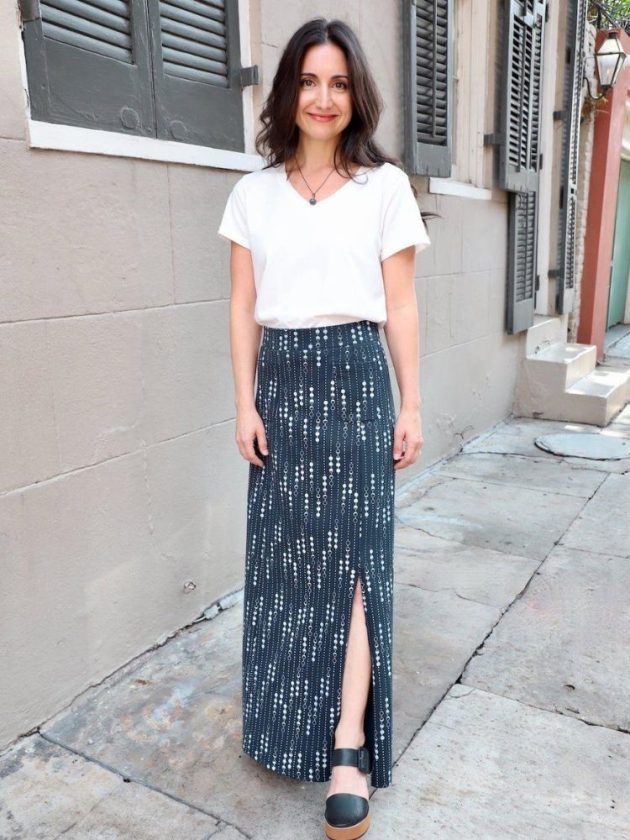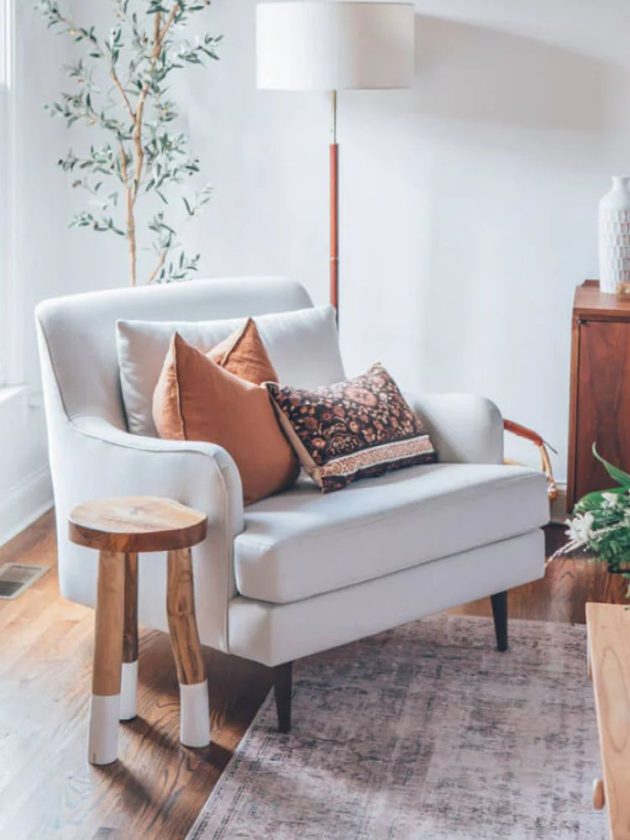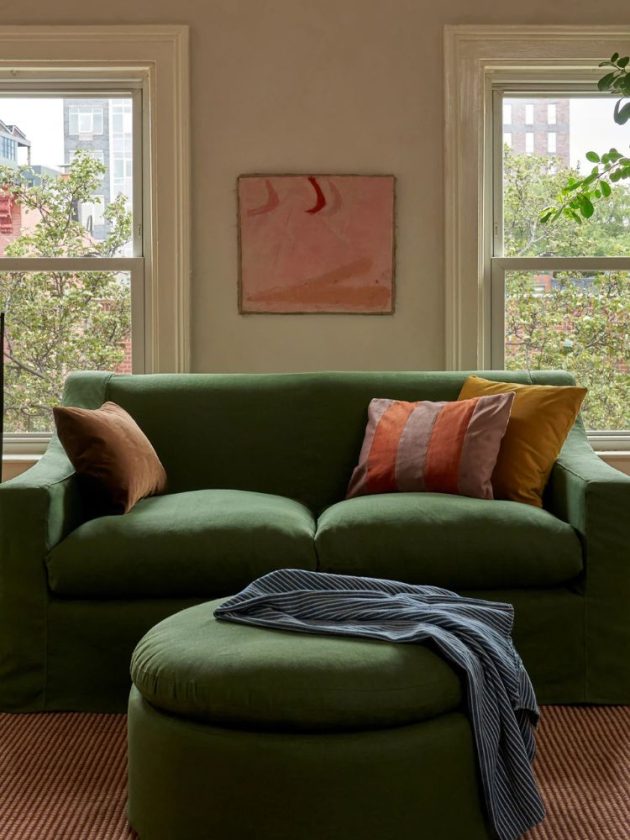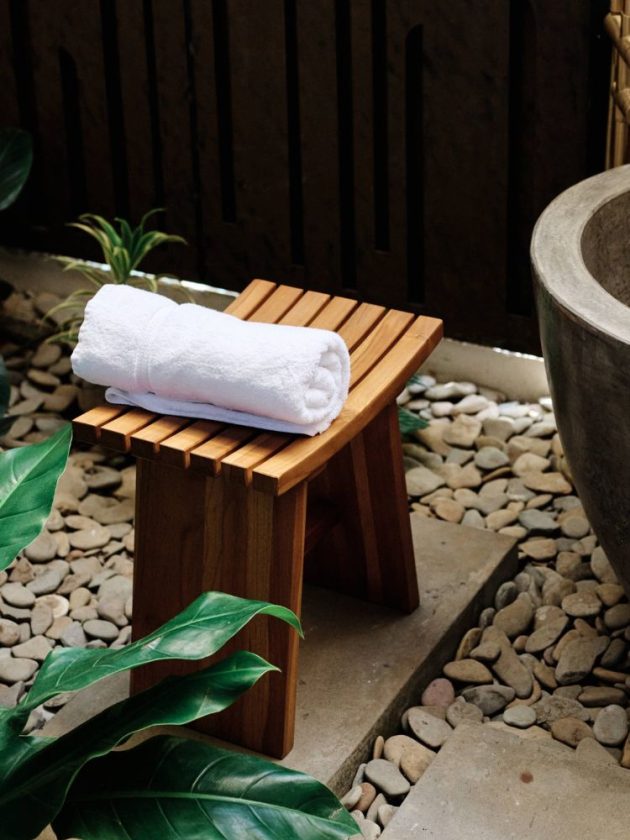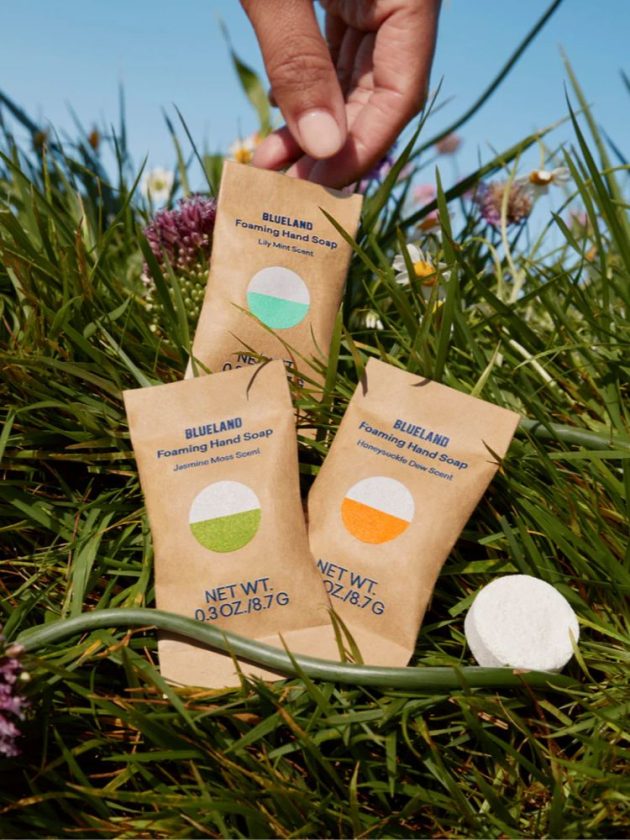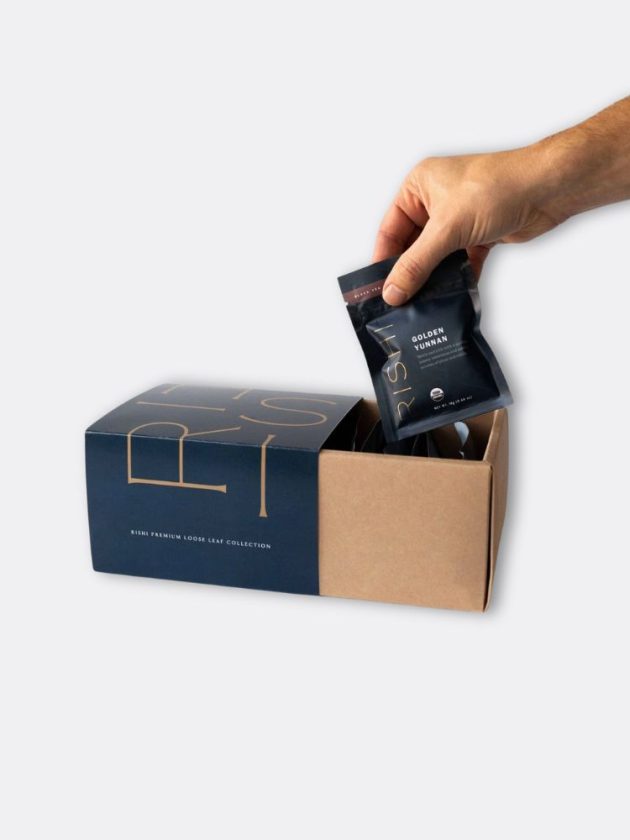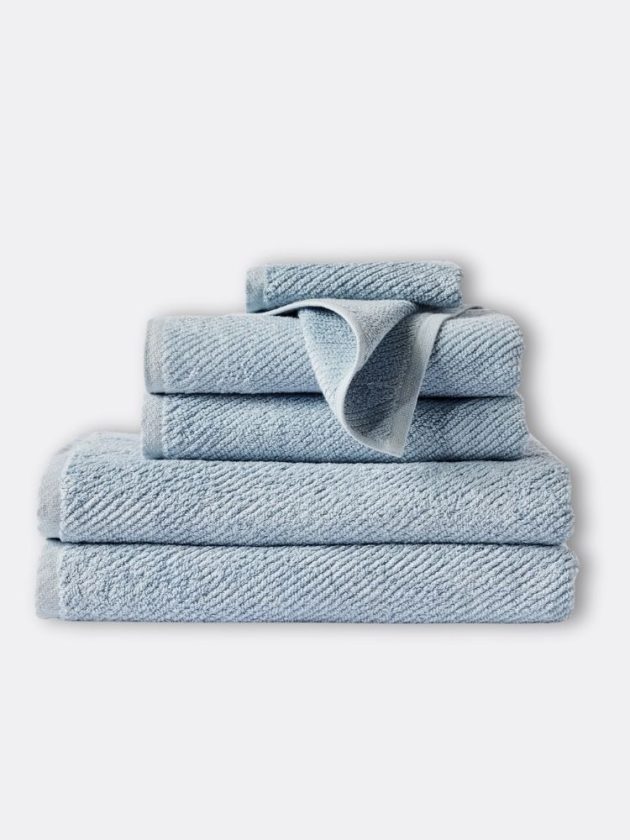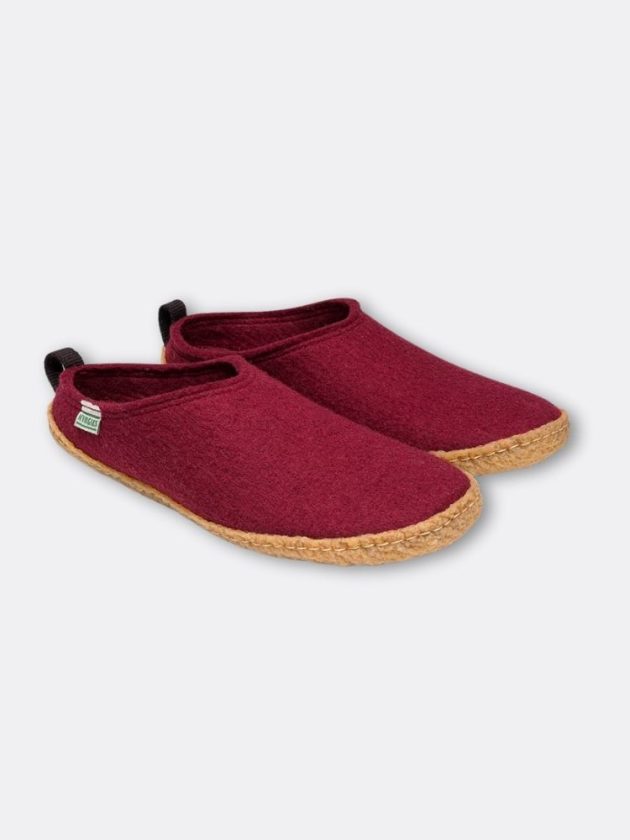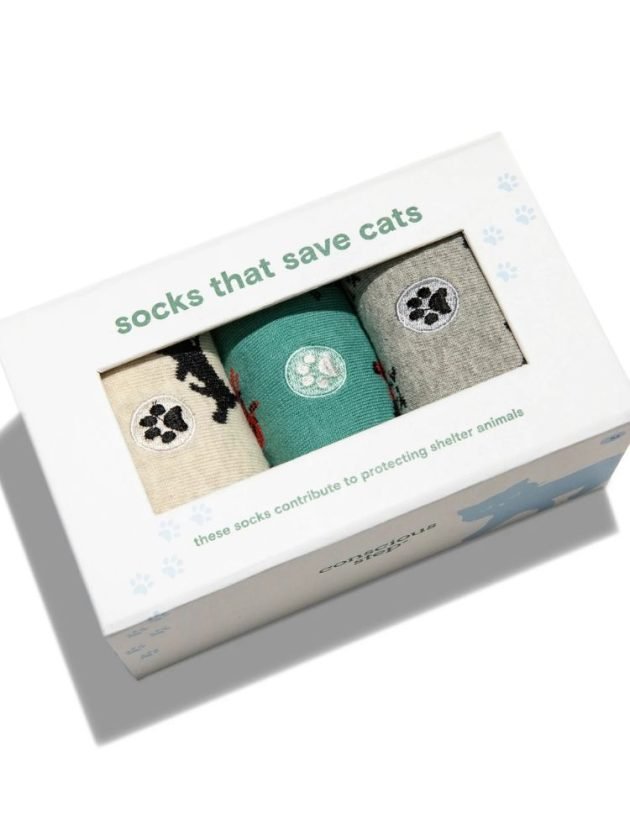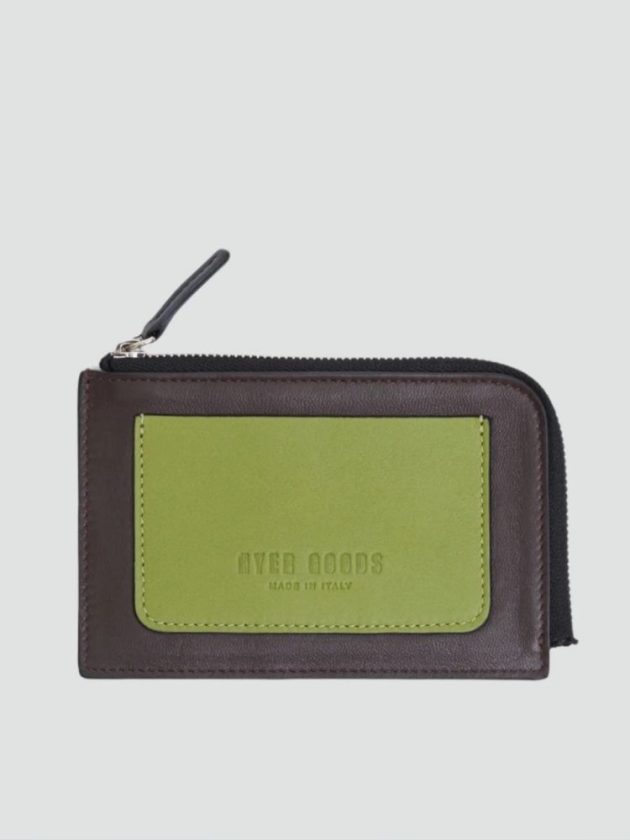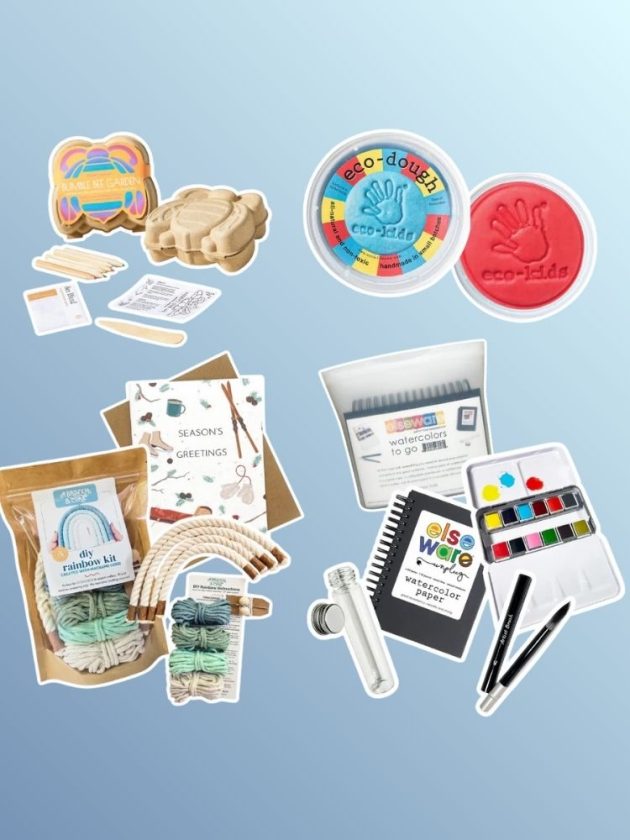Spanish fishers in Galicia — Europe’s main source of shellfish and the biggest producer of mussels in the world — are reporting a “catastrophic” collapse in shellfish populations due to the climate crisis.
Some shellfish stocks have plummeted by 90 percent in just a few years, reported The Guardian.
The clams and cockles local residents depend on and have been harvesting for years are disappearing fast. Extreme weather events like torrential rain and heat waves have become more intense and frequent due to climate change, threatening the region’s marine species.
Spanish fishers in Galicia report ‘catastrophic’ collapse in shellfish stocks
— The Guardian (@theguardian.com) January 28, 2025 at 12:18 AM
“Either the shellfish adapt, or they die, and us too,” said Patricia Piñeiro, who harvests clams in the small fishing town of Cambados, but has been having an increasingly difficult time finding ones big enough to harvest, as Mongabay reported. “They’re just too small.”
Piñeiro held a measuring device provided by local fishing authorities that was set to 1.5 inches — the minimum size for harvesting the bivalves.
There has been a steep decline in clams, mussels and cockles, according to a fishing website, reported The Guardian. The cockles and clams are collected at low tide by hand, while mussels are taken from the ocean on ropes attached to wooden rafts.
Cockle numbers fell by 80 percent in 2023, compared with the year before, while some clam varieties dropped by 78 percent. Oyster production has seen a slight increase.
Mussel production in 2024 was the lowest in 25 years, falling to 178,000 tonnes from 250,000 tonnes in 2021.

“Extreme climate events, such as heatwaves and torrential rain, affect the physiology and functioning of marine species, especially in estuarine habitats, producing severe ecological and socioeconomic impacts when the affected species support important fisheries, such as artisanal shellfisheries,” said a 2023 analysis, “Assessment of Risks Associated with Extreme Climate Events in Small-Scale Bivalve Fisheries: Conceptual Maps for Decision-Making Based on a Review of Recent Studies,” published in the Journal of Marine Science and Engineering.
María del Carmen Besada Meis, head of the San Martiño fishers association in Ría de Arousa, believes climate change is to blame. The past two years have brought above-average rainfall to the region, with recent torrential rains lowering the water’s salinity.
“But we don’t have enough concrete evidence and what we’d like is for someone to come and do some proper research so that we know what’s behind this and what we can do about it,” Besada Meis said, as The Guardian reported. “We’re marisqueros (shell fishers) and we don’t know what the solution is, which is why [we] need scientists to help us with this. The government needs to put some money on the table for this research.”
Marta Martín-Borregón, coordinator of Greenpeace oceans in Spain, described the recent figures as “catastrophic.”
“The biggest cause is pollution from waste discharged into the estuary, from agriculture and from factories, such as the fish canneries,” Martín-Borregón said.

Plans to open a copper mine and build a cellulose plant could potentially produce more waste and use enormous amounts of water.
The water company in Galicia said waste was dumped into the sea over 2,000 times each year, 10 percent of which exceeds legal toxicity limits.
Martín-Borregón said, though pollution is a huge problem, the main culprit is climate change.
“The waters of the rías are normally cold and the currents bring a lot of nutrients. With warming seas there are species of shellfish that can’t thrive in warm water,” Martín-Borregón explained. “This is especially the case with mussels and as the temperatures rise the shellfish industry is moving closer towards collapse.”
When dams are opened during low tide, the rías is flooded with freshwater, reducing salinity and leading to massive mortality events for bivalves, especially cockles.
Invasive species like the blue crab — a western Atlantic and Gulf of Mexico native — are also attracted to the warmer waters. Blue crabs feed on local species such as velvet and spider crabs, which have high market value.
“We can’t make a living like this,” Besada Meis said. “We carry on working but we’re living on social security.”
The post Spanish Fishers in Galicia Say Shellfish Stocks Are Collapsing Due to Climate Change appeared first on EcoWatch.
https://www.ecowatch.com/spain-shellfish-population-collapse-climate-change.html
Green Living
8 Best Non Toxic Rugs For a Sustainable Home
Last Updated on November 6, 2025
Did you know most rugs are made from polyester, aka plastic? Arguably, a good chunk of our furniture and home decor is nowadays.
And lets not forget – rugs can get a lot of foot traffic. If it’s made from polyester, chances are those plastic fibers are going to shed and get onto us. Or worse, in us.

Some of the links in this post are affiliate links; for more information please see my disclosure policy.
Microplastics have been found in human feces, blood, and even placentas. And according to a study from Stanford University, those who had microplastics in their plaque had a higher risk of heart attack, stroke and death than those who didn’t.
On top of this, 5 billion pounds of rugs go to waste each year – that’s 2% of total US landfill. And if they’re made from plastic? They won’t biodegrade.
It’s more important than ever to reduce our exposure to microfibers where we can. Which is why I’ve rounded up the best non toxic rugs on the market.
what is the least toxic rug?
The least toxic rug will have sustainable materials and use no harsh chemicals (like PFAs) in their production.
Here’s what to look for when purchasing a non-toxic rug:
- Sustainable materials, such as organic cotton, jute, sisal or wool
- Low-waste packaging + delivery
- Natural, non-synthetic dyes
- Third-party certifications like OEKO-TEK, Fair Trade, GOTs
- Easy to spot-clean or machine wash
- Available in various styles, patterns + colors to suit your needs
do all rugs have PFAS?
According to Department of Toxic Substances Control (DTSC), only four samples of 201 carpets and rugs were found to contain more than 100 parts per million in their fibers, indicating PFAS were intentionally added to the products.
However, while PFAs may not be a huge concern for rugs, microplastic pollution is, specifically if your carpet is synthetic. Your best bet is to check the material your rug is made from and choose natural fibers whenever possible.
what is the best non-toxic rug for nursery?
The best non-toxic rug for a nursery would be made from natural materials like wool and organic cotton (which are soft on baby’s skin).
I recommend also checking for natural latex for the rug backing and underlay pads. Brands on this list that offer kid-friendly sizes and patterns include Lorena Canals, Nestig, Quince, and Loomy (more on each below).
what brand of rugs are non-toxic?
The brands of rugs that are non-toxic are listed below. I’ve gone ahead and highlighted some of my favorite features of each brand, but it isn’t an exhaustive list. Be sure to check out their websites for more information.

1. hook and loom
- Various rug sizes, shapes + patterns
- Made from GOTs certified organic cotton, recycled cotton + wool
- No dyes or harmful chemicals
- No latex
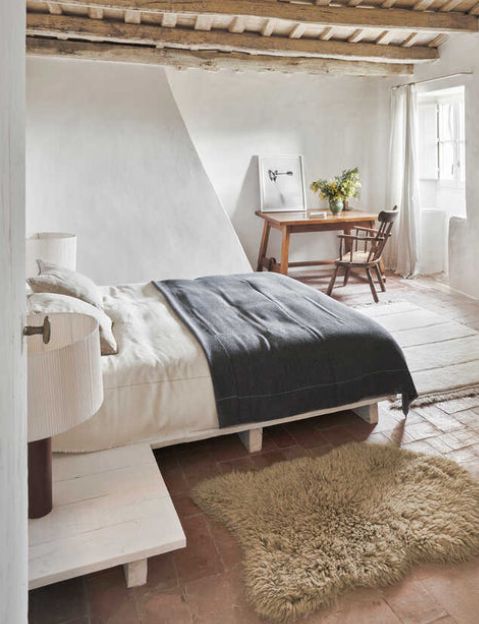
2. lorena canals
- Various rug sizes, shapes + patterns
- Handmade by artisans using recycled materials like organic cotton + wool
- Nontoxic dyes
- Make your own option
- Machine washable
- Rugcycled line made from recycled materials in their own factory
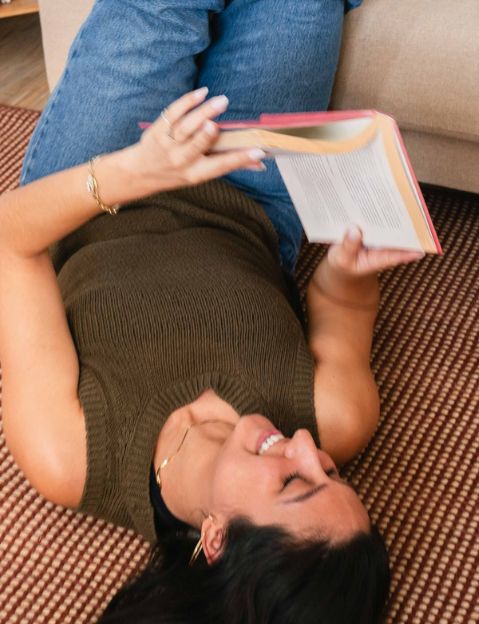
3. sabai
- Field rug
- Woven using wool + jute
- Available in 3 varying sizes
- Rug pad add-on available for reduced movement
- Certified B Corporation

4. quince
- Various sizes + patterns, best known for vintage-inspired looks
- Made from natural materials like wool, jute, + cotton
- Handcrafted by artisans in India
- Transparent pricing practices
- Compostable poly bags + recycled plastic mailers

5. west elm
- Rugs for every area of the home, in varying sizes
- Made from wool, jute, hemp, cotton, TENCEL + recycled materials
- Handspun by skilled artisans in India
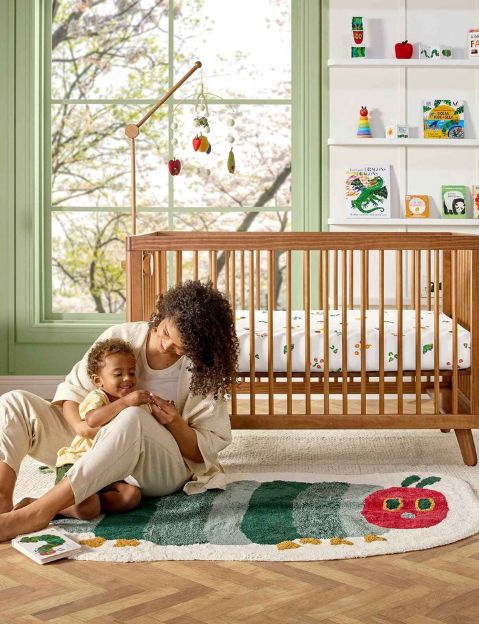
6. nestig
- Area + washable rugs made with fun shapes/designs for babies + kids
- Washable rugs made with organic cotton + nontoxic dyes
- Area rugs made with cotton + each colored element crafted from recycled cotton
- Handmade in Brazil

7. cold picnic
- Various rug shapes + sizes, abstract patterns + bold colors
- Made with wool, bamboo silk, cotton, hemp, + deadstock materials
- Designed in a Brooklyn studio, handmade by artisans in India
- Committed to reducing packaging waste where possible
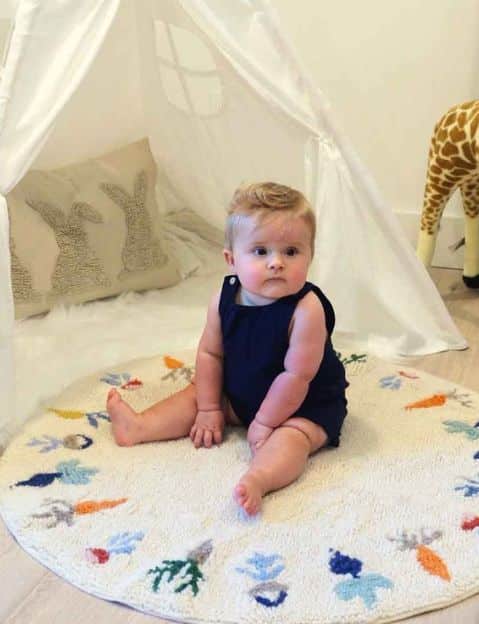
8. loomy
- Various rug sizes, shapes + patterns
- Made from banana silk, hemp, jute, recycled fiber, viscose, or wool
- Any colored yarn dyed using low-impact techniques
- Handcrafted by indigenous artisans
So what do you think of these non toxic, sustainable rugs? Let me know in the comments!
The post 8 Best Non Toxic Rugs For a Sustainable Home appeared first on Going Zero Waste.
Green Living
Our Picks for the Top Black Friday and Cyber Week Sales From Sustainable Brands
It’s not easy shopping consciously during the holiday season — especially during Cyber Week. It’s a time of year notorious for overconsumption, impulse buys, and purchases that are bound for the landfill just months (or even days) later.
But I also don’t believe that sustainable living just looks ONE way. These sustainable and ethical Black Friday discounts can be a way to access better products for more affordable prices. And a great way to support small businesses over big box stores during what is often the most important time for businesses.
Here are some things to keep in mind to engage with Cyber Week and Black Friday more sustainably!
1. A “deal” isn’t a “deal” if we’re buying things we won’t actually use and enjoy long-term (it’s easy to get caught up in the thrill of a deal and buy something that we totally wouldn’t have bought otherwise — been there, done that!)
2. Our whole platform is about challenging overconsumption, but if we want to intentionally purchase some ethical clothing or eco-friendly gifts, these sale days can be a great opportunity to support conscious brands more affordably.
3. It’s worth asking some additional questions and taking some extra time to make these purchasing decisions because the dopamine hit of a good deal can skew our decision-making abilities!
4. If the whole Cyber Week affair stresses you out or you’re feeling pressured to buy more than you originally intended, know that you can step out at any time. Turn off your notifications and get outside and/or spend time with loved ones! You do not need to buy ALL (or any) of your holiday gifts during this week.
But if you’re ready to make a mindful investment in something for yourself, or have a long list of gifts and you want some support in shopping small and consciously, check out this list of the best sustainable and ethical Black Friday and Cyber Week deals going on. Plus, we featured some companies opting out of deals and doing donations instead.
Transparency note: we only feature brands that meet high standards for sustainability we love, that we think you’ll love too. Some of these links are affiliate links, meaning if you purchase via these links we may earn a commission, which helps us continue this site. Thanks for your support!
Here Are Our Top Picks for This Season:
1. Passion Lilie
With elevated womenswear and menswear that pop in prints and weaves, this woman-owned brand champions artisanal techniques like hand block printing and hand weaving to create the most flattering styles that’ll withstand trends.
The brand carefully creates its pieces to make sure they are biodegradable at the end of their lifecycle by using natural fibers like recycled cotton and organic cotton that are treated with organic dyes. Since artisanal craft plays such an important role in their design ethos, Passion Lilie ensures all producer groups they employ are either Fair Trade certified or employ its core practices.
Sale Details: 30% off site-wide with free shipping over $125. Use coupon code BFCM2025. Valid November 26 – December 3
2. Mightly
Founded by four mothers who wanted to create comfortable, long-lasting clothing for active children – minus the toxic chemicals – Mightly is setting the standard for consciously crafted kidswear that takes fun designs just as seriously. Don’t just take our word for it, scroll their site to find Mightly’s delightfully colorful collection of clothing for babies, toddlers, and kids in prints that’ll add a spring in your little one’s step.
Every piece is made using Global Organic Textile Standard certified organic cotton and is sewn at Fair Trade certified factories, ensuring every step of production is responsible.
Sale Details: Tiered discount available sitewide November 25 – December 1.
- 15% off orders of $75+
- 20% off orders of $150+
- 30% off orders of $250+
3. MasayaCo
If you’re seeking artisanal furniture that’ll breathe some character into any space, then look no further. MasayaCo creates a range of handcrafted pieces from reforested teak wood that supports artisans and has an enduring quality. You’ll find versatile pieces to suit nearly every room of your home — and even something for outdoor settings that’ll withstand the elements owing to their naturally water-resistant teak.
MasayaCo has built a restorative model where they grow and manage their own forests, harvesting mature trees for furniture while 30-40% of the reforested land is preserved as a native forest.
Sale Details: 20% off all items and up to 40% off on select items November 19 – December 4. All discounts auto-applied at checkout.
4. Medley
For those who prefer plush, elevated furniture with an inviting appeal, Medley will make you feel right at home with their pieces. Ready to insert a mid-century modern touch into any home, they use time-honored building techniques to offer lasting furniture that ages beautifully.
You can lounge easy on Medley’s pieces knowing that right from the filling to the upholstery, and wood, the materials they use are tested by certifying bodies like OEKO-TEX® STANDARD 100, CertiPUR-US®, and GREENGUARD Gold, to name a few, which indicate the materials have been tested to be free of harmful substances and meet the most stringent standards for low chemical emissions.
Sale Details: TBA | November 28 – December 2
5. Sabai
Nothing adds life to a living room quite like a cozy and inviting sofa. And at Sabai, you’re bound to find a cushy one that’ll serve itself as a centerpiece for the heart of your home. Sabai is on a mission to make sustainable furniture that’s affordable, repairable, and circular.
The company has a range of sofas and loveseats made from recycled and upcycled materials in non-toxic finishes that are completely modular, so they can accommodate and adapt to your changing needs. All of their pieces are created on a made-to-order basis with the option to order up to six swatches free of charge for the discerning decorators.
Sale Details: TBA
The following Black Friday and Cyber Week sales from sustainable brands are sorted by category!
Sustainable Homewares & Furniture Sales
Avocado
Non-toxic brand with low-waste manufacturing offering your bedroom a sustainable upheaval with organic mattresses and bedding
Discount: TBA
Urban Natural
Sustainable home decor and furniture retailer with top brands like Copeland, Cisco Home and East Fork
Discount: TBA
Boll & Branch
Fair trade and organic-certified bedding and bath products
Discount: TBA
The Citizenry
Artisan-made home goods and furniture
Discount: TBA
Coyuchi
Sustainable bedding, bath, home goods, and pajamas made with GOTS-certified organic cotton or regeneratively-sourced fibers
Discount: TBA
My Green Mattress
Non-toxic organic mattresses, bed frames, and accessories
Discount: TBA
Saatva
Eco-friendly memory foam mattresses and organic bedding
Discount: TBA
Savvy Rest
Organic mattress and non-toxic furniture retailer using sustainable natural materials
Discount: TBA
SOL Organics
GOTS-certified organic cotton bedding
Discount: TBA
Ethical & Sustainable Fashion Holiday Sales
Christy Dawn
Slow fashion brand with dreamy dresses and other clothing made responsibly from deadstock fabric, organic cotton, or regenerative cotton grown by Oshadi in India
Discount: TBA
Kotn
Responsible clothing brand offering everyday essentials made from natural fibers with a traceable origin
Discount: TBA
Mate The Label
Loungewear and basics made with non-toxic and organic materials
Discount: TBA
Monica Vinader
Jewelry made from 100% recycled gold vermeil and 100% recycled sterling silver
Discount: TBA
Organic Basics
Eco fashion brand with intimates, basics, activewear and lounge apparel made with earth-minded fabrics
Discount: TBA
PACT
Organic cotton basics and loungewear plus home textiles made in Fair Trade Certified factories
Discount: TBA
Tradlands
Nap dresses, balloon pants, and all things cozy, crafted in sumptuous natural fibers and deadstock materials
Discount: TBA
The RealReal
Luxury fashion consignment site for finding pre-loved designer apparel and accessories
Discount: TBA
The Knotty Ones
Timeless and stylish hand-knitted knitwear made with biodegradable yarns crafted by female artisans living in rural Lithuania.
Discount: TBA
Thesus
Ethical footwear brand with vegan boots and sneakers made from sustainable, traceable materials, including large percentage of recycled materials
Discount: TBA
Vestiaire Collective
Luxury fashion resale site
Discount: TBA
tentree
Eco-minded clothing and accessories brand that plants 10 trees with every order
Discount: TBA
ThredUp
Online secondhand marketplace
Discount: TBA
Subset
Organic cotton underwear and bralettes
Discount: TBA
Brook There
Comfy organic cotton undergarments: underwear, bralettes, and nightgowns cut and sewn in the U.S.
Discount: TBA
EILEEN FISHER
Timeless, high quality slow fashion brand with circularity programs
Discount: TBA
HYER GOODS
Wallets, bags, and other accessories made from upcycled materials
Discount: TBA
Whimsy + Row
Eco-friendly Los Angeles-based clothing label with effortless pieces
Discount: TBA
Toad&Co
Eco-friendly men’s and women’s outerwear and casual clothing
Discount: TBA
Reformation
Sustainably-minded apparel brand actively working towards 100% circularity and building a Climate Positive business
Discount: TBA
Clean and Low Waste Beauty
100% Pure
Fruit-pigmented makeup and plant-based non-toxic skincare
Discount: TBA
Activist Skincare
Woman-owned brand creating high-performing vegan skincare that comes in plastic-free and refillable packaging
Discount: TBA
ILIA
Clean makeup brand — personally I love their Limitless Lash and Super Serum Skin Tint
Discount: TBA
Detox Market
Clean beauty and wellness retailer
Discounts: TBA
Henry Rose
Fine fragrances with 100% ingredient transparency; EWG Verified and Cradle to Cradle Certified
Discount: TBA
Kjaer Weis
Natural makeup brand with low-waste refillable packaging
Discount: TBA
Sustainable Cookware, Cleaning & Daily Essentials
360 Cookware
Non-toxic stainless steel cookware crafted in Wisconsin in the U.S.
Discount: TBA
Blueland
Eco-friendly cleaning supplies, including dish soap and laundry detergent
Discount: TBA
Our Place
Non-toxic non-stick pans made in ethical factories; WOC-owned
Discount: TBA
Enviroscent
Non-toxic, cruelty-free refillable home scents
Discount: TBA
XTREMA
Non-toxic ceramic cookware
Discount: TBA
Dropps
Biodegradable laundry and dishwashing pods
Discount: TBA
We’re continuing to update this post so be sure to bookmark it for later!
In the meantime, check out our gift guide: 30 Sustainable and Ethical Gift Ideas for Everyone On Your List
The post Our Picks for the Top Black Friday and Cyber Week Sales From Sustainable Brands appeared first on .
Our Picks for the Top Black Friday and Cyber Week Sales From Sustainable Brands
Green Living
21 Eco-Friendly & Ethical Gift Ideas For Everyone on Your List
From gorgeous home decor and indulgent organic beauty to artisanal quality accessories and thoughtfully-crafted gift sets, you’re sure to have a successful (and stress-free) gift-giving experience for everyone on your list through our curation of conscious yet covetable ethical gifts.
We know that finding that perfect present for every individual in your life can be an overwhelming task, especially if you’re a conscious-minded shopper. To put you out of your holiday-gifting-induced anxiety, we’ve put together a comprehensive, sure-fire assortment of ethical gift ideas for you.
So, go ahead and secure your favorite spot on the couch to get ready to check off your gift giving list, because this ethical gift guide will not disappoint. With something for every special someone on your list — even the hard-to-shop-for folks in your life — we’re making it possible to get much of your seasonal shopping accomplished in one place.
Rest assured, you’ll find something delightful for yourself too — maybe a set of gram-worthy pastel cookware? Think of it as an incentive to get you through the holiday hustle.
Now, don’t let us keep you…get ready to have your gift-wrapped ducks in a row with our sustainable gift ideas ahead. The perfect gifts for socially conscious and environmentally aware loved ones in your life!
Please note that this guide includes CL&S partners and affiliate links. As always, brands meet strict criteria for sustainability and are brands we love — and that we think you’ll love too!
1. Organic Cotton Clothing by Passion Lilie
Why we love it: Fair Trade, Organic Cotton, Pays Living Wages, Woman-Owned | Price: $68+
Passion Lilie offers a range of elevated clothing made from sumptuous organic cotton fabric that’ll keep your loved ones looking stylish and feel all snuggled up come winter. From handwoven shirts for men to figure-flattering hand-printed dresses for women, the brand’s dedication to highlighting artisanal craft reverberates throughout its collection. We recommend bookmarking their crimson hand-printed snowflake dress for the women who’ll appreciate a holiday-themed gift. You could also complement the dress with a dainty little stocking stuffer like one of the tea towels or napkins from their collection of kitchen linens in bright and charming prints.
2. Handcrafted Teak Furniture by MasayaCo
Why we love it: Reforested Teak Wood, FSC® Certified, Vertically-Integrated Supply Chain, Reforestation Program | Price: $55+
Offering artisanal teak furniture that’ll add a touch of understated elegance to any home, Masaya & Co. has curated a range of side tables and stools under $350 for the discerning decor enthusiasts. Handcrafted from durable and naturally water-resistant teak wood, their slatted top Japanese-inspired Zapatera stool has garnered raving reviews about just how well it holds up as an in-shower stool. The brand operates on a self-sustaining model by growing its own FSC® Certified teak trees on reforested land in Nicaragua.
3. Organic Cotton Kidswear by Mightly
Why we love it: GOTS Certified, Fair Trade Certified , Woman-Owned | Price: $18+
, Woman-Owned | Price: $18+
For the little ones you know and adore, Mightly has a range of organic cotton kidswear that’ll make for a great gift this festive season. Think dresses that are big on twirl factor, cozy pajamas with prints that pop, and unisex hoodies with snap front pockets to store all their tiny treasures. Every piece is made with GOTS certified organic cotton, which explicitly prohibits the use of toxic chemicals in the finished product, making it ideal for kids with sensitive skin. And if that wasn’t reassuring enough, the pieces are also thoughtfully designed to include details like tag-free labels, easy-to-wear fits, and playful designs that make it fun yet functional.
4. Non-Toxic Loungewear by MATE the Label
Why we love it: Plant-Based Materials, B Corp, Woman-Owned, GOTS Certified Fabrics | Price: $48+
With laidback loungewear that strikes the perfect balance between fashionable and effortless, MATE the Label boasts of cozy threads you’d want in your wardrobe come winter. Stylish options are just a bonus, the brand is committed to keeping its clothes free of toxic chemicals and harmful dyes while adhering to self-imposed protocols to ensure the factories it works with are safe, fair, and compliant with California labor laws. They’ve also made choosing a gift a lot easier with their curated holiday guide that’s categorized by budget and persona.
5. Refillable Hand Soaps by Blueland
Why we love it: WOC-owned, Plastic-free, Refillable, Natural Ingredients | Price: $12+
A conscious gift that is both practical and plastic-free, Blueland has floral-scented hand soap tablet refills can be paired with their glass dispenser bottle that’ll stay in use on the bathroom countertop for a long time. The process of using these is as easy as filling up the bottle with warm water, dropping in a soap tablet, and pumping it to find hydrating, foamy goodness at your fingertips.
Blueland’s Garden Blooms Variety Pack soap tablets feature plant-based and planet-friendly ingredients in scents inspired by the fragrances found in your own backyard.
6. Premium Loose Leaf Tea Collection by Rishi Tea & Botanicals
Why we love it: USDA Certified Organic, Ethically Sourced, Agrochemical-free | Price: $67
For the ones who cherish daily indulgences like a warm cup of tea, this gift set will send them on a sensory journey through global tea traditions. This gift set features 12 curated blends that range from delicate green teas to robust black teas, refreshing herbals, and fragrant oolongs. Don’t just take our word for it, one reviewer claims the set was “very luxurious” and found the tea selection to be “amazing and delicious”. The brand supports growers through ethical and direct sourcing that pays 5-10x the commodity prices to incentivize their efforts on sustainable harvests of organic quality.
7. Bonfire Reusable Candle by Mimi & August
Why we love it: Reusable, Soy Wax, Non-toxic Fragrance | Price: $38 CAD
Hunting for the perfect holiday gift to present a great hostess? Snatch up this fragrant little candle to light up their space with an inviting aroma.
Evoking the smell of a nostalgic campfire with notes of cedar, vanilla, and smoke, this hand-poured soy wax candle comes in reusable cups of different sizes that can be filled with some hot cocoa and marshmallows once used up.
8. Jewel Tone Birth Month Dish on Uncommon Goods
Why we love it: Certified B Corporation, Philanthropic, Reforestation Program, Pays Fair Wages | Price: $25
Glazed in birthstone colors, this jewelry dish is the prettiest little ethical gift that’ll adorn any dressing table. They feature crackled glass centers resembling crystalline geode slices that give them a distinctive appearance. Simply select the birth month to get a unique jewelry dish that’s just as special as the person you intend to give it to.
Crafted by a trained female potter, you can find more such unique handmade gifts on Uncommon Goods where independent designers are celebrated for their work.
9. Sake Body Lotion by cocokind
Why we love it: WOC-owned, Certified Organic Ingredients, Philanthropic, Life Cycle Transparency | Price: $23
Crafted with Japanese fermented rice wine that’s rich in smoothing enzymes and microbiome-friendly prebiotic sugars, the sake body lotion by cocokind has a reviewer describing it as “the only body moisturizer” where they’ve “used the entire bottle.”
Available in an upcycled plastic bottle that’s fully recyclable, the sake extract they use is created by fermenting rice kernels and is completely alcohol-free. It also contains a blend of sunflower seed oil and shea butter that’ll leave skin feeling supple and soft.
10. Organic Towels by COYUCHI
Why we love it: Plant-Based Materials, Fair Trade Certified Factories, GOTS Certified Fabrics | Price: $18+
Factories, GOTS Certified Fabrics | Price: $18+
Know someone who loves a good towel lounge after a shower? We reckon these indulgent organic towels might just motivate them to stretch those sessions even further. Offering an array of matching organic cotton towel sets in weaves and textures that look like they’ll wrap you up in luxury, these towels also come in lovely earthy tones and size options, in case you aren’t keen on getting the entire bundle. They’ve even got a set of plush cotton robes that’ll offer them enough reason to not leave the house and disappear into it like a second skin.
11. Handcrafted Wool Slippers by Kyrgies
Why we love it: OEKO-TEX® STANDARD 100 Certified, Biodegradable, Plastic-Free, Low-Waste Practices, Woman-Led Factories | Price: $89+
Let your loved ones kick up their feet in comfort come winter with a little help from Kyrgies wool slippers. Kyrgies’ cozy slip-on offerings are handcrafted in Kyrgyzstan, where local sheep are known for producing wool with long fibers that are ideal for felting in a mulesing-free process. The wool is felted by a women-led factory using centuries-old techniques, ensuring leftover off-cuts are reused as extra padding in their slippers or repurposed as natural insulation for buildings.
12. Weighted Blanket by Bearaby
Why we love it: OEKO-TEX® Standard 100 Certified, Global Recycled Standard Certified, GOTS Certified, Reforestation Program | Price: $199+
For the busy bees who could use some serious R&R, this weighted blanket will help them hit the hay faster. Known for aiding with naturally deeper sleep cycles, Bearaby’s weighted blankets are crafted using organic cotton that’s free of fillers and owes its weight to the chunky knit fabric alone.
Not just for cozy winters, these machine-washable cotton blankets are knitted for maximum breathability making them perfect for all seasons.
13. Life Designer Journal by Intelligent Change
Why we love it: Philanthropic, Natural Materials, Recycled, Compostable, FSC® Certified Paper | Price: $39
For the ones who have a special spot for aesthetic stationery, this journal is a gift they won’t judge solely by its pretty cover.
Filled with mindful prompts centered around five essential pillars that guide you through a self-reflective journey to help manifest your best self, this journal will be a portable therapist and best friend bound between the pages that might just have you picking up a copy for yourself as well.
14. Tree of Life Cork Yoga Mat by Scoria
Why we love it: Woman-owned, Natural Materials, Philanthropic | Price: $105
Offering the ultimate incentive for perfecting the warrior two pose, this alignment cork yoga mat features a methodical tree of life print that isn’t just aesthetically appealing but also helps properly align postures with a line across the middle. Talk about combining style and function!
Crafted with a sustainably harvested cork surface that’s backed by natural rubber, this anti-slip mat comes with a handy cotton mat carry strap.
15. Shallow Dinner Set by East Fork
Why we love it: Certified B Corporation, Philanthropic, Pay Living Wages | Price: $156
For the friend who is always posting perfectly plated stories of what they’ve cooked, this set will be a highly welcome addition to their dinnerware collection.
Including two bowls and three plates in different sizes, this handcrafted ceramic shallow dinner set comes in many hues, but we highly recommend the black set for its understated elegance and the way it’ll make a rainbow salad or smoothie bowl pop.
East Fork’s pottery glazes are completely food-safe and free of lead so they won’t have to worry about heavy metals leaching into meals.
16. Safe & Snuggly Baby Box by The Filtery
Why we love it: Woman-Owned, Non-Toxic, Plastic-Free | Price: $125
For the mindful new parent who’d appreciate a practical gift for their little one, this box is a thoughtful curation of non-toxic baby essentials like an organic diaper balm, plastic-free feeding bottle, organic cotton blanket with pacifier, silicone bath toys, and fragrance-free body wash, along with a wonderful plantable holiday card that’ll sprout up like their child.
The best part? It’ll arrive in a ready-to-gift box that won’t require any additional gift-wrapping with the option to add a personalized note at checkout that’ll be hand-written for the recipient.
Use code CONSCIOUSSTYLE at checkout for 10% off!
17. Sock Gift Boxes that Give Back by Conscious Step
Why we love it: GOTS Certified, Fair Trade Certified , Philanthropic | Price: $35+
, Philanthropic | Price: $35+
Colorful socks with fun designs that don’t just look good but also give back, these ethical gift sets will easily be one of the most meaningful presents you’ll give your loved ones. These soft organic cotton sock sets are created in collaboration with creative artists to help connect customers with world-changing nonprofits through causes they care about.
From socks that support mental health to ones that protect the ocean, dogs, cats, and beyond, you’ll be sure to find a sock set with a purpose.
18. Friendship Bracelets by Monica Vinader
Why we love it: Recycled Metals, Traceable Supply Chain, Recycling Program, Philanthropic | Price: $130+
The adult equivalent of a friendship bracelet, these fine baubles will be adorned and cherished by your BFF for years to come.
Monica Vinader’s collection of friendship bracelets ranges from fine 18k gold vermeil versions to nylon cord styles to maintain that old-school charm.
What’s more? You can add a complimentary engraving with either a motif or personalized text to make it just as meaningful as the bracelets you handmade in high school.
19. Piccolo Zipper Card Wallet by HYER GOODS
Why we love it: Deadstock and Recycled Materials, Woman-Owned, Reforestation Program | Price: $125
Chic and petite, this luxe zip wallet will quickly become the new go-to essential they won’t leave the house without. With five exterior card slots and a lined cash compartment with an extra card slot that comes with a zip-around closure, this minimal wallet is surprisingly functional for daily use.
We love the fact that it’s made using recycled deadstock materials and is compact enough to fit into tiny clutch bags. The brand sources its leather from local leftovers, making sure every recipient receives something unique.
20. Throw Pillows by Studio Variously
Why we love it: WOC-owned, Natural Materials, Natural Dyes, Ethically Made | Price: $74+
On the lookout for ethical gift ideas that’ll add an inviting hygge vibe to any space? Then look no further than these textural throw pillows by Studio Variously.
Available in earthy hues that are finished with intricate patterns and embroidery, these pillows are handcrafted using natural materials that fit in well in just about any interior setting.
21. The Little Artist Gift Box by The Filtery
Why we love it: Woman-Owned, Non-Toxic, Plastic-Free | Price: $150
A gift box that every kid — and parent! — will adore receiving, this curation of plastic-free art supplies is a great way for children to develop fine motor skills and serves as a fruitful distraction from screen-time.
Packed with a watercolor painting kit, plant-based play-dough, macramé kit, garden activity kit, and a plantable holiday card for the budding little green thumb, you can confidently click “add to cart” knowing the box will arrive gift-wrapped and ready to stuff under the Christmas tree.
Use code CONSCIOUSSTYLE at checkout for 10% off!
And one last bonus sustainable gift idea for the person on your list that doesn’t want more stuff:
Audiobook Gift Membership on Libro.fm
Why we love it: Supports local and independent bookstores | Price: $31+
Consider this the perfect gift for the bookworm in your life who enjoys a great read but has lately been having a tough time getting through their ever-increasing to-be-read pile.
We love the fact that Libro.fm offers a range of credit bundles to choose from so that your gift recipient can have their pick of the lot while supporting local bookstores through your purchase.
 For More Slow Fashion Content:
For More Slow Fashion Content:
About The Author:

Jharna Pariani is a fashion writer and creative strategist whose work is rooted in honesty and deep observation of the world around her. When she isn’t busy penning down her thoughts, she moonlights as a video editor creating fashion and food reels on Instagram for several brands and influencers
You Might Also Want to Check Out:
The Best Affordable Eco-Friendly Stocking Fillers the Family Will Love
The Ultimate Guide to Experience Gifts For the Whole Fam
The post 21 Eco-Friendly & Ethical Gift Ideas For Everyone on Your List appeared first on .
21 Eco-Friendly & Ethical Gift Ideas For Everyone on Your List
-
Climate Change3 months ago
Guest post: Why China is still building new coal – and when it might stop
-
Climate Change2 years ago
Spanish-language misinformation on renewable energy spreads online, report shows
-
Greenhouse Gases3 months ago
Guest post: Why China is still building new coal – and when it might stop
-

 Greenhouse Gases1 year ago
Greenhouse Gases1 year ago嘉宾来稿:满足中国增长的用电需求 光伏加储能“比新建煤电更实惠”
-
Climate Change Videos2 years ago
The toxic gas flares fuelling Nigeria’s climate change – BBC News
-

 Climate Change1 year ago
Climate Change1 year ago嘉宾来稿:满足中国增长的用电需求 光伏加储能“比新建煤电更实惠”
-

 Carbon Footprint2 years ago
Carbon Footprint2 years agoUS SEC’s Climate Disclosure Rules Spur Renewed Interest in Carbon Credits
-
Renewable Energy4 months ago
US Grid Strain, Possible Allete Sale

